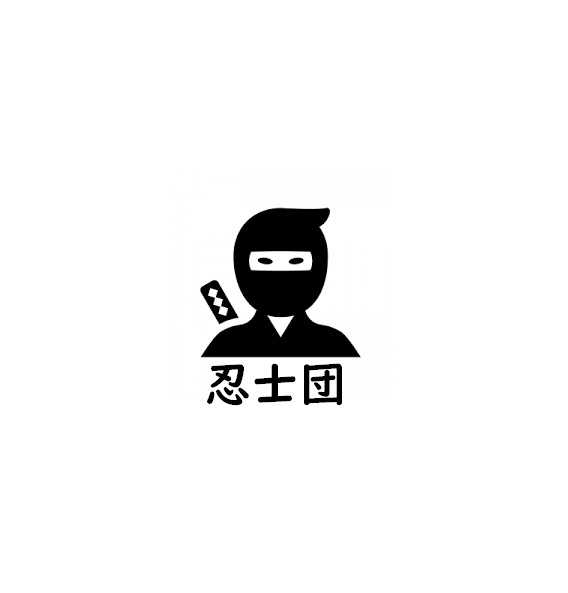This is the abstract of the presentation we gave at the third annual convention of the International Ninja Research Association held in Ueda, Nagano , on Sept. 14, 2019.Ninshido: The New paradigm of the Order of Shinobi SamuraiA paradigm is a distinct set of concepts or thought patterns, and standards for what constitutes legitimate contributions to a field.
Contents of this presentation:
Part 1 Introduction
Part 2 Comparison of Shinobisamurai (Ninshi) in Mansen Shukai and that of our order.
Part 3 Ninshido as a New Paradigm
Part 4 Advocacy of Ninshido
Part 1 Introduction
Since 2006, we have been working to elevate Musashi-ryu Ninjutsu to the higher standards of Do (the way) and to help create a new culture. Our Order has identified the fundamental principles and has set up a system to create the paradigm. Our Order has termed the paradigm “The Code of Shinobi Samurai, or “Ninshido”. The members of our order share this practice of ninjutsu. Presently, we have started to slowly disclose the contents of Ninshido to the public. In this presentation, we offer a comprehensive vision of this paradigm and explain its usefulness.
Part 2 Comparison of Shinobisamurai in Mansen Shukai and how that applies to our order
Mansen Shukai and Shoninki discuss the philosophy of the shinobi. In this presentation, we will review the concept of morality and ethics of the ninjas in the Mansen Shukai (1676 version), followed by the study of the background of Ninshido of our order. The book is owned by the National Archives of Japan Cabinet Library.
In Mansen Shukai, the shinobi are classified into two categories, Shinobisamurai and Shinobinomono. The Shinobisamurai are samurai who practice ninjutsu. They are supposed to be true to their seishin (having a spirit that is unrelenting to the pressures of life & difficultly) and follow their jutsuri (mechanics and principles) of seizing the opportunities to conduct intelligence activities.
Our Order of Shinobi Samurai defines samurai operatives (Metsuke) and samurai who engaged in covert activities for the Edo Shogunate, and those who became key to intelligence activities in Europe as envoys as the Edo Ninshi (Shionobi-samurai or Ninshi). It’s obvious that Edo ninshi examinees acquired knowledge of how to govern society as well as ethical norms based on Confucianism and neo-Confucianism owing to Gakumon Gimmi recruitment examinations by the Shogunate. It is presumed that this shift in samurai qualities took place before the introduction of Bushido by Nitobe Inazo.
Part 3 Ninshido as a New Paradigm
Ninshido evolves and adapts to change. The Order of Shinobi Samurai has defined the modern ninshi as a person with expertise, belongs to the organization, finds and assembles information, and works for a common goal while walking in the path of NIN or Harmony.
In the Taisho era, Christian ideas were introduced in our order and our ancestors’ paradigm changed. In the latter half of the Showa era, Yin-Yang concept, Zen and the like were added to our shinobi philosophy, and new theories along with ideals were then established.
In the Heisei era, the fundamental philosophy was named Resonance and Water Mirror, and the ultimate purpose of our training was to be one with “ku” or to obtain “no-self.” Guidelines, systems and methods were established to gradually shift our member’s expertise from jutsu (art) to Do (Way). Ninshi practice mental training and ninja skills which put their Ninshi philosophy and creeds into daily practice. By putting the spirit of Resonance and Water Mirror in their daily activities, Ninshi can carry out their missions, make decisions, create things, and develop new human resources and skills.
In our modern times, Ninshi make use their developed sensibility to practice ninjutsu skills and knowledge to be in harmony in all situations. The action guideline is expressed by the four characters: “Lin puh lai in” signifying ; Act quietly and fast, get results instantly without being noticed.” An example of this idea is the “Musashi Ninja Experience”. An instructor and an interpreter/trainer objectively look at the participants in each experience and accurately grasp what’s needed. The interpreter makes liberal translations, obtaining necessary information from the participants, and adjusts the contents of the experience with the instructor while communicating between the different cultures.
Part 4 Advocacy of Ninshido
A paradigm of the educational system and teaching philosophy is indispensable to develop and spread the ninja culture in Japan and abroad. With this paradigm, ninjutsu practitioners can effectively utilize the traditional shinobi techniques and timeless wisdom in this modern age. We Advocate Ninshido as a valid framework for today and for the future.


コメント